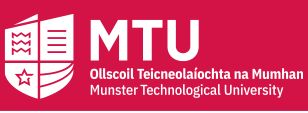Date of Award
1998
Document Type
Master Thesis
Degree Name
Masters of Science (Research)
Department
Biological Sciences
First Advisor
Dr. Séamus Fanning
Abstract
Venous thrombosis is a serious health problem affecting 1 in 1000 individuals annually. Until recently the pathogenic factors underlying thrombosis were associated with genetic defects in protein C, protein S and antithrombin III. However these were recognised in fewer than 5-10% of thrombotic patients. A breakthrough was made with the discovery of activated protein C resistance (APCr) which is associated in 90% of cases v/herein a G-->A transition in the factor V gene results in an abnormal molecule, Factor V Leiden. APCr is a major risk factor for thrombosis being present in 20-60% of thrombotic patients. Recently a G-^A new mutation at the 3’-untranslated region (UTR) of the prothrombin gene was described. This mutation increases the level of prothrombin in blood by a mechanism(s) which remain(s) to be defined. Furthermore this mutation is thought to be linked to thrombosis since it is present in 6% of thrombotic cases.
This work is divided between three areas. The first part of this study examined 40 thrombotic patients and 40 normal individuals using two commonly used coagulation-based assays for detection of APCr. Comparisons of analytical specificity and sensitivity were made as a means of critically assessing the kits performance. Genotype assignments for factor V were also determined using site- directed mutagenesis (SDM)-polymerase chain reaction (PCR).
In the second part of this study a ‘single-tube’ amplification refractory mutation (ARMS) detection strategy for factor V Leiden and the prothrombin variant was developed. Essentially these strategies used fluorescent-based differentially- labelled primers to simultaneously amplify both allelic-types.
The final stage of this work examined the genotypes and ‘rest-time’ clotting properties of 75 thrombotic patients who presented for cardiac venografting. Initially the viso-elastic properties of each subjects blood was studied using thromboelastography (TEG). Subsequently genotyping was performed using SDM-PCR protocols to detect factor V Leiden, the prothrombin variant and other mutations in the blood clotting pathway components of protein C and antithrombin III. Comparisons between TEG and genotype data were made. Results of this analysis has significant health economic implications.
Recommended Citation
Maher, Caroline, "Molecular Analysis of the Factor V-Leiden Mutation in a Cardiac Transplant Patient Population" (1998). Theses [online].
Available at: https://doi.org/10.34719/SVKE7746
Access Level
info:eu-repo/semantics/openAccess



